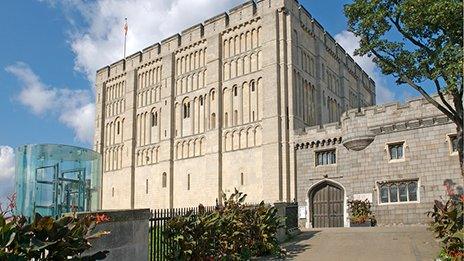Statue of Samson from Norwich nightspot back on display
- Published
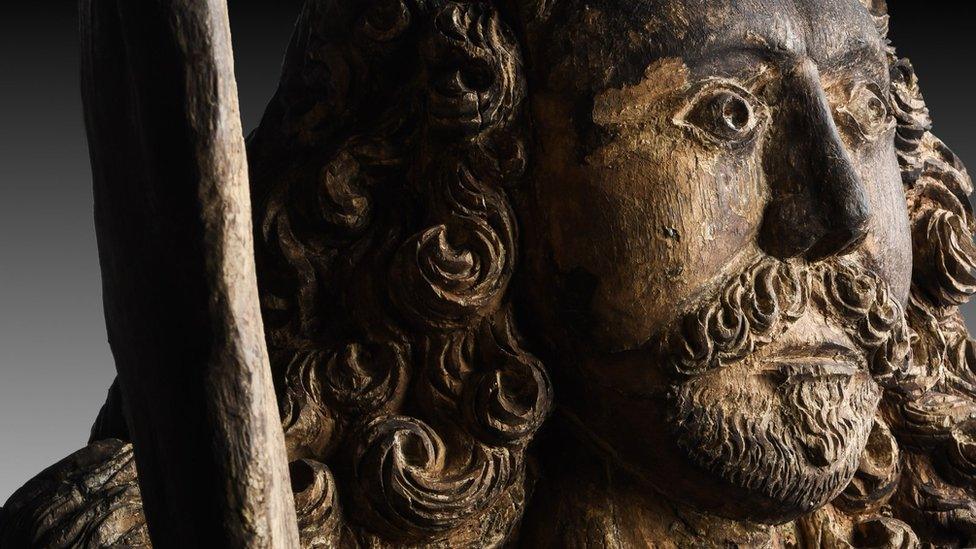
Museum curator Jenny Caynes said Samson's intricate features including his "beautiful long curls" could now be seen following the four-year restoration
A 17th Century statue of Samson, which stood at the doors of a nightclub, has gone on display at a museum after having 60 layers of paint removed.
The oak figure has been put on show at the Museum of Norwich, having flanked the entrance of a house built in 1657 in the city's Tombland.
A crowdfunding campaign raised £15,000 in 2018 for the display.
Curator Jenny Caynes said the carving had "undergone an amazing transformation".
You may also be interested in:
The restoration has taken four years and Samson is now in an environmentally-controlled glass case, having survived two world wars, a fire and nightclubbers' antics when he stood alongside his 129-year-old "doorman" partner Hercules.

Thick layers of white paint have been stripped back to reveal the carvings
Ms Caynes said Samson, a tribute to the Biblical strongman who lost his strength when his long hair was cut, had been carved out of a single oak tree trunk.
"They were these big white featureless people - we all loved them - but Samson has had his paint taken off," she said.
"At 350 years old, I think he has weathered pretty well - we can all see features, his beautiful long curls, with Samson's strength in his hair.
"The detail of his moustache and his eyes - we think he's rather wonderful."
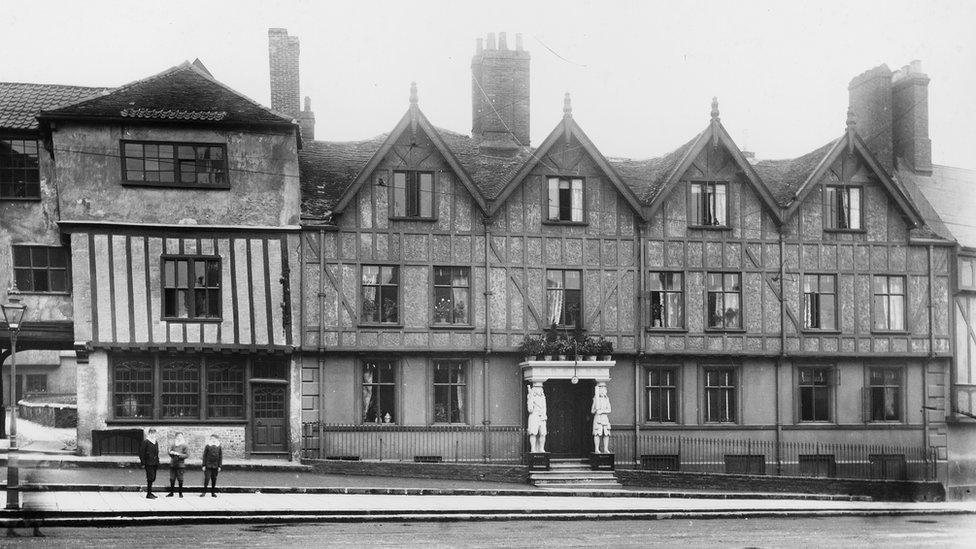
The figures were kept in a courtyard from 1789 and returned to the front door in 1890
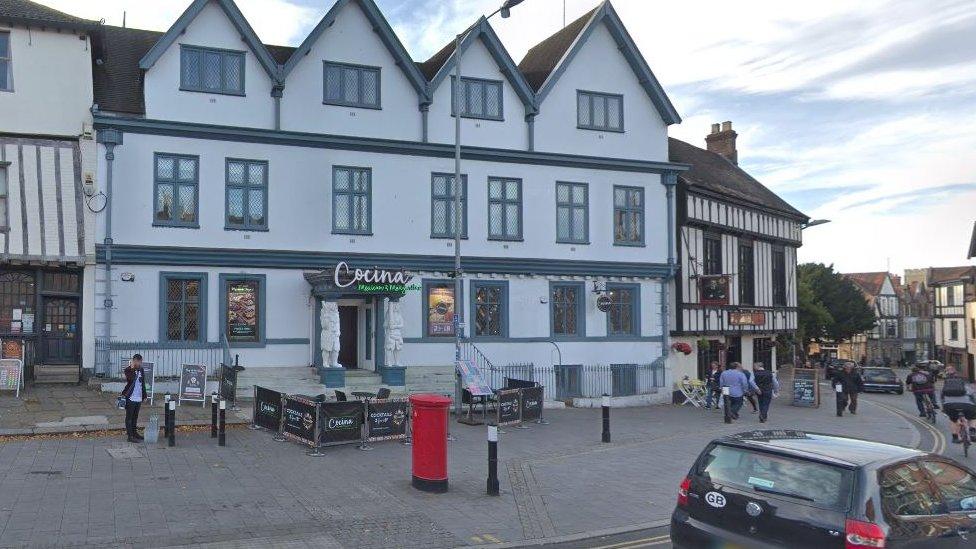
Samson and Hercules House was converted into a restaurant and flats in 2003, with fibreglass figures now standing guard
A touchscreen display at the museum provides the history of Samson and Hercules House, which was owned by the city's mayor Christopher Jay, who erected the statues.
The building became a dancehall in 1934 and remained a nightspot - changing its name to Ritzy's in 1983 - until 2003.
Hercules, a tribute to the mythological Greek strongman, was replaced by a copy in 1890, but by the 1990s both statues had decayed and were removed, with fibreglass versions installed instead.
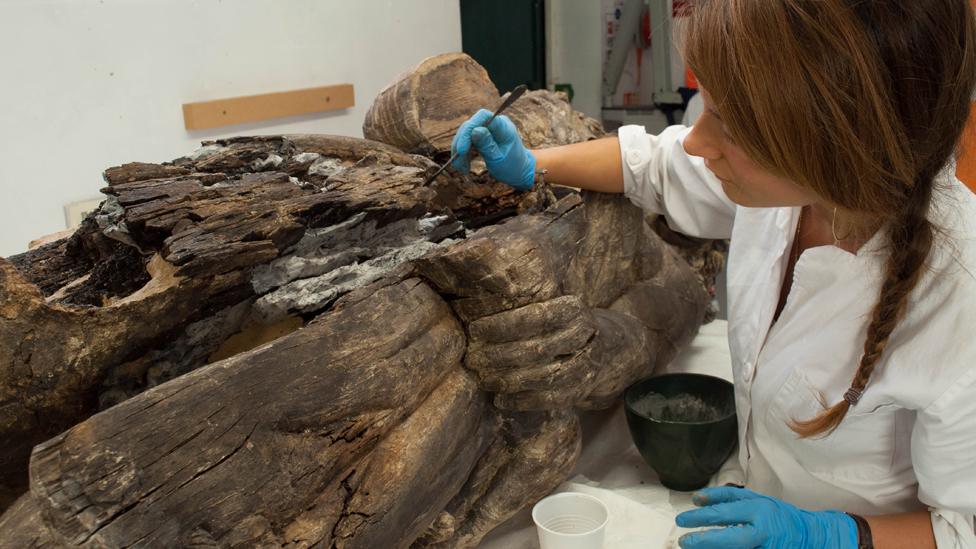
The restoration project has been nominated for a heritage award
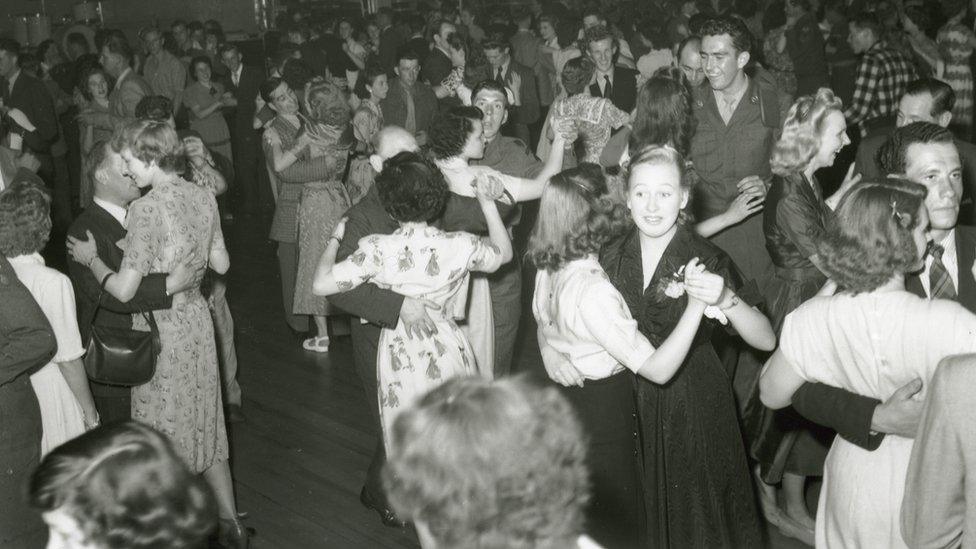
Samson and Hercules House was turned into a dance hall in 1934 - with the dancefloor covering a swimming pool
Ms Caynes said the restoration by London's Plowden & Smith had been shortlisted for a top heritage award, external for its "unusual and unique story".
The statue features in the BBC Civilisations project.
- Published14 February 2018
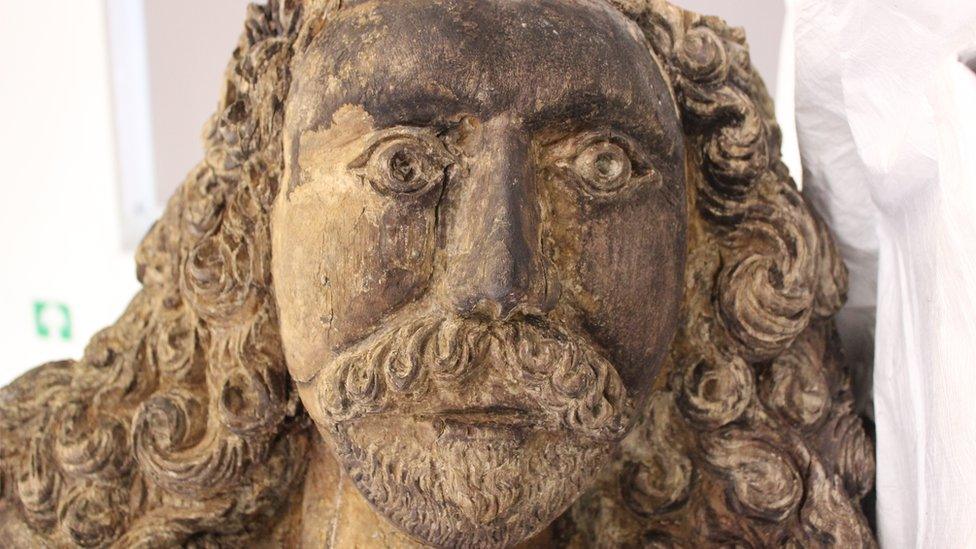
- Published10 January 2018
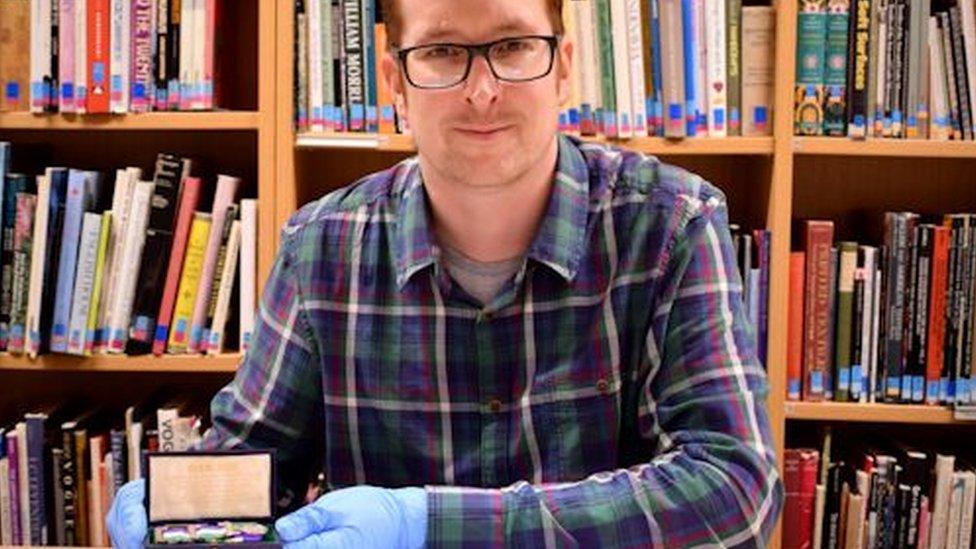
- Published9 February 2018
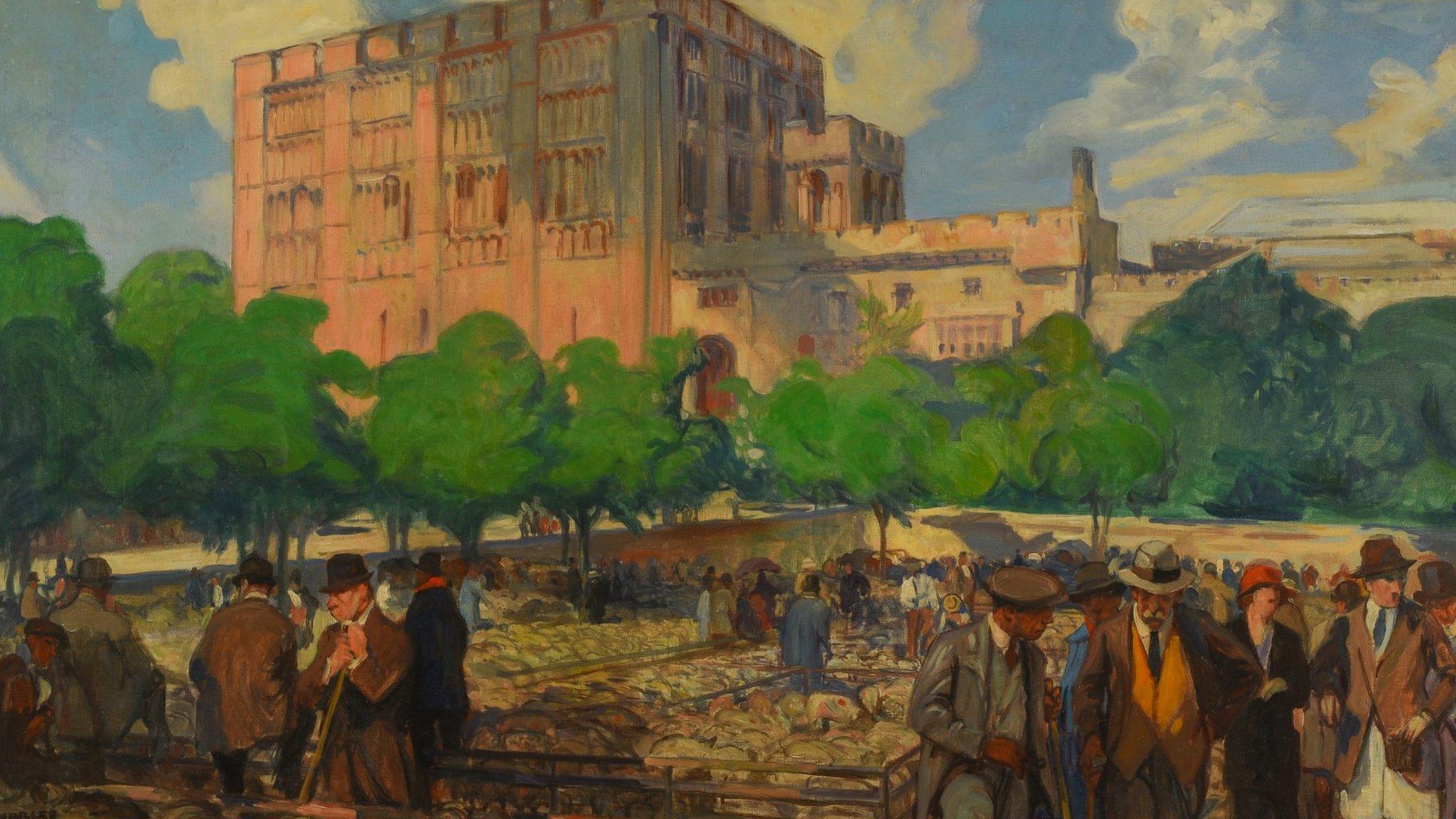
- Published17 November 2017
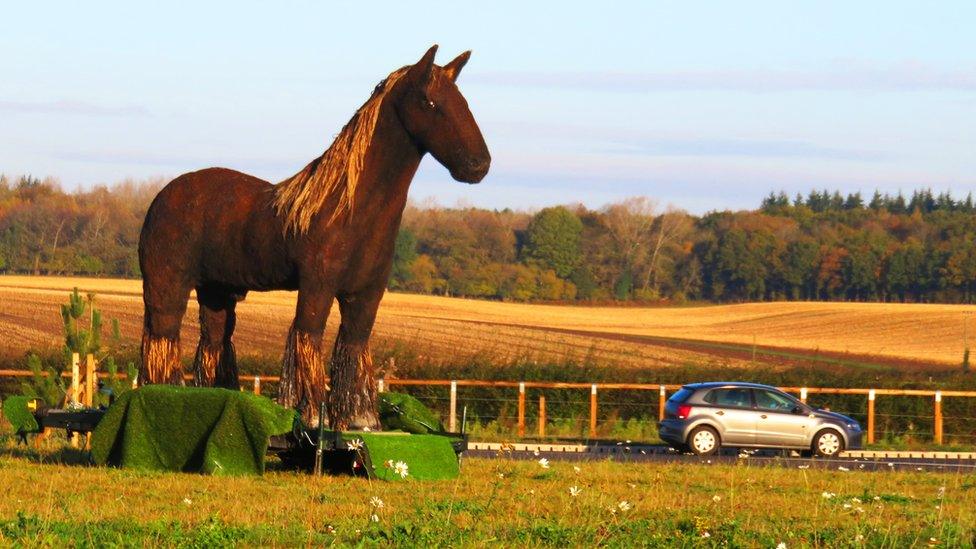
- Published19 February 2015

- Published6 March 2012
